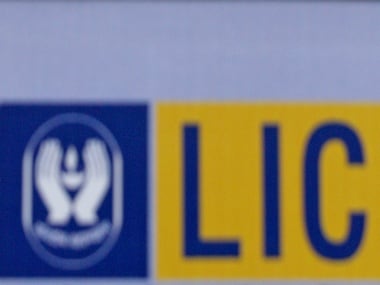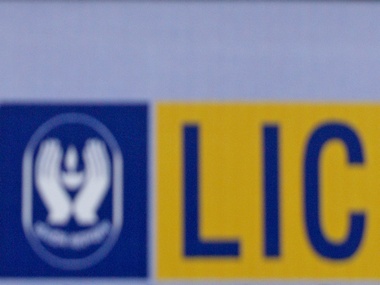It is no secret that LIC has been bailing out some of the public issues of state-run entities, including those of banks, whenever these issues have failed to attract the interest of non-government investors. But, if one goes through the caution note issued by global ratings agency Standard and Poor’s on the state of public sector banks, the state run insurer seems like it is being formally acknowledged as the official saviour of India’s capital-starved state-run banks. S&P said that in the absence of adequate capital support from the government, state-run banks will have to tap alternative sources for funds like markets and other options, including the Life Insurance Corporation of India (LIC). “Public sector banks will therefore (in the absence of sufficient funds from government infusion) have to raise additional capital through additional Tier 1 hybrid instruments, equity markets, and state-owned Life Insurance Corp. (LIC),” S&P said in the note. [caption id=“attachment_2162633” align=“alignleft” width=“380”]
 Reuters image[/caption] The mention of LIC in the S&P note is interesting, but not entirely unexpected, given that the insurer has been regularly rescuing several public issues of state-run entities. In January this year, the state-run insurer purchased shares worth Rs 10,000 crore out of the Rs 22,600 crore offer for sale of Coal India. Last year, LIC bailed out one third of the Rs 9,000 crore issue launched by SBI, among others. Overall, S&P’s caution on the banking sector is very much warranted and an expected move after finance minister Arun Jaitley announced a capital infusion of less than Rs 8,000 crore in this year’s Union Budget for fiscal 2016. This is nearly half of what was originally required to fulfil the mandatory reserve requirements and expand business. In fiscal year 2015 as well, the government infused only about Rs 7,000 crore in banks, out of the promised Rs 11,200 crore capital assistance. State-run banks stand to lose in terms of profitability on account of an expected delay in the reversal in the bad loan scenario and capital constraints, S&P said. The agency warns that prolonged weakness in asset quality of Indian banks could lead an increase in the economic risk perception of these entities. Also, the stand-alone credit profiles and ratings of some public sector Indian banks are sensitive to deterioration in their asset quality and erosion in capital and earnings, S&P has said. S&P’s observations are logical in the backdrop of a significant weakening in the financial health of state-run banks and the government’s reluctance to recapitalize them. The number of public-sector banks with gross non-performing assets (NPAs) above 5 per cent of their total loans has grown to 15 percent from 9 percent in the previous year. Till December alone, total gross NPAs of 25 state-run banks stood at Rs 2.65 lakh crore, constituting 90 per cent of the total gross NPAs of India’s 40-listed banks, which stood at Rs 2.93 lakh crore till end December. The rise in bad loans can’t be seen isolation since there is a large chunk of restructured loans as well on the books of banks, waiting to become NPAs in the absence of immediate recovery in the economy. Analysts expect 25 percent to 30 percent of such loans to go bad if the economic recovery fails to materialise. Stressed assets impact the earnings of banks since they need to set aside money to cover such assets. Total provisions made by state-run banks’ in the December quarter rose to Rs 20,942 crore, up 8.2 percent from the year-ago period. Private banks are in a relatively better position, though not fully insulated from the problem. The gross NPAs of private lenders, in the December quarter stood at Rs 28,456 crore and their provisions at Rs 2,673 crore. To add to the worries of these lenders, their provisioning burden is set to increase from next fiscal year onwards, when banks will have to treat restructured loans as NPAs. As against the 5 per cent provisioning for standard restructured loans currently, banks will have to make 15 per cent provisions from April, which will add to their provisioning burden. Besides NPAs, state-run banks also have to meet the Basel-III norms by March, 2019. As per the Basel-III norms, banks need to have minimum equity capital adequacy ratio of 7 percent and Common Equity Tier-1 (CET-1) capital of 5.5 percent. Indian banks need Rs2.4 lakh crore to meet these requirements. A Firstpost analysis of Capitaline data shows that at least 11 government banks have Tier-I capital adequacy less than 8 percent. In addition, banks will also need to build a 2.5 percent capital conservation buffer to be used in bad times. Indian banks need to meet Basel-III norms by 2019 and the incremental burden keeps increasing with every passing year. The solution that the government has offered banks is that they should raise capital from the market. But the question is which investor, apart from state-owned LIC, would want to buy into the state-run lenders that are burdened with NPAs and have weak balance sheets? In that context, it is understandable why S&P has mentioned LIC as a saviour for public issues of state-run banks. Needless to say, it is a bad practice that the government has constantly resorted to by diverting the cash reserves of one of its entities to bail out public issues of other state-run entities. Global rating agencies have already taken note of this. Jaitley, who is pitching for a sovereign rating upgrade, perhaps needs to put an end to the practice of transferring cash from one hand of the government to other. At some point the government needs to stop using LIC as its home-grown milch-cow. (Kishor Kadam contributed to this story)
Reuters image[/caption] The mention of LIC in the S&P note is interesting, but not entirely unexpected, given that the insurer has been regularly rescuing several public issues of state-run entities. In January this year, the state-run insurer purchased shares worth Rs 10,000 crore out of the Rs 22,600 crore offer for sale of Coal India. Last year, LIC bailed out one third of the Rs 9,000 crore issue launched by SBI, among others. Overall, S&P’s caution on the banking sector is very much warranted and an expected move after finance minister Arun Jaitley announced a capital infusion of less than Rs 8,000 crore in this year’s Union Budget for fiscal 2016. This is nearly half of what was originally required to fulfil the mandatory reserve requirements and expand business. In fiscal year 2015 as well, the government infused only about Rs 7,000 crore in banks, out of the promised Rs 11,200 crore capital assistance. State-run banks stand to lose in terms of profitability on account of an expected delay in the reversal in the bad loan scenario and capital constraints, S&P said. The agency warns that prolonged weakness in asset quality of Indian banks could lead an increase in the economic risk perception of these entities. Also, the stand-alone credit profiles and ratings of some public sector Indian banks are sensitive to deterioration in their asset quality and erosion in capital and earnings, S&P has said. S&P’s observations are logical in the backdrop of a significant weakening in the financial health of state-run banks and the government’s reluctance to recapitalize them. The number of public-sector banks with gross non-performing assets (NPAs) above 5 per cent of their total loans has grown to 15 percent from 9 percent in the previous year. Till December alone, total gross NPAs of 25 state-run banks stood at Rs 2.65 lakh crore, constituting 90 per cent of the total gross NPAs of India’s 40-listed banks, which stood at Rs 2.93 lakh crore till end December. The rise in bad loans can’t be seen isolation since there is a large chunk of restructured loans as well on the books of banks, waiting to become NPAs in the absence of immediate recovery in the economy. Analysts expect 25 percent to 30 percent of such loans to go bad if the economic recovery fails to materialise. Stressed assets impact the earnings of banks since they need to set aside money to cover such assets. Total provisions made by state-run banks’ in the December quarter rose to Rs 20,942 crore, up 8.2 percent from the year-ago period. Private banks are in a relatively better position, though not fully insulated from the problem. The gross NPAs of private lenders, in the December quarter stood at Rs 28,456 crore and their provisions at Rs 2,673 crore. To add to the worries of these lenders, their provisioning burden is set to increase from next fiscal year onwards, when banks will have to treat restructured loans as NPAs. As against the 5 per cent provisioning for standard restructured loans currently, banks will have to make 15 per cent provisions from April, which will add to their provisioning burden. Besides NPAs, state-run banks also have to meet the Basel-III norms by March, 2019. As per the Basel-III norms, banks need to have minimum equity capital adequacy ratio of 7 percent and Common Equity Tier-1 (CET-1) capital of 5.5 percent. Indian banks need Rs2.4 lakh crore to meet these requirements. A Firstpost analysis of Capitaline data shows that at least 11 government banks have Tier-I capital adequacy less than 8 percent. In addition, banks will also need to build a 2.5 percent capital conservation buffer to be used in bad times. Indian banks need to meet Basel-III norms by 2019 and the incremental burden keeps increasing with every passing year. The solution that the government has offered banks is that they should raise capital from the market. But the question is which investor, apart from state-owned LIC, would want to buy into the state-run lenders that are burdened with NPAs and have weak balance sheets? In that context, it is understandable why S&P has mentioned LIC as a saviour for public issues of state-run banks. Needless to say, it is a bad practice that the government has constantly resorted to by diverting the cash reserves of one of its entities to bail out public issues of other state-run entities. Global rating agencies have already taken note of this. Jaitley, who is pitching for a sovereign rating upgrade, perhaps needs to put an end to the practice of transferring cash from one hand of the government to other. At some point the government needs to stop using LIC as its home-grown milch-cow. (Kishor Kadam contributed to this story)
Stop banking on LIC: S&P's note should show FM that he shouldn't rely on insurer to save public banks
Dinesh Unnikrishnan
• March 19, 2015, 16:32:56 IST
The government’s possible intention of bailing out state run banks using funds from LIC is a bad idea.
Advertisement
)
End of Article